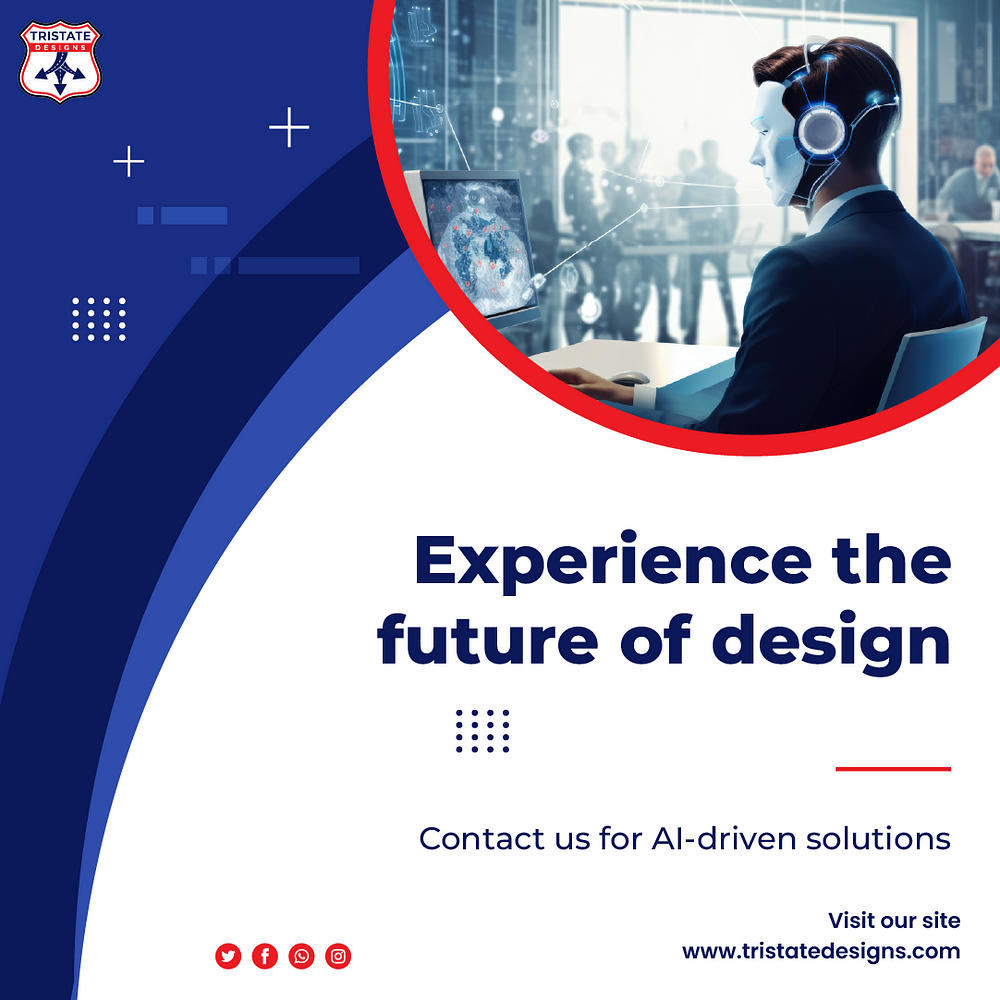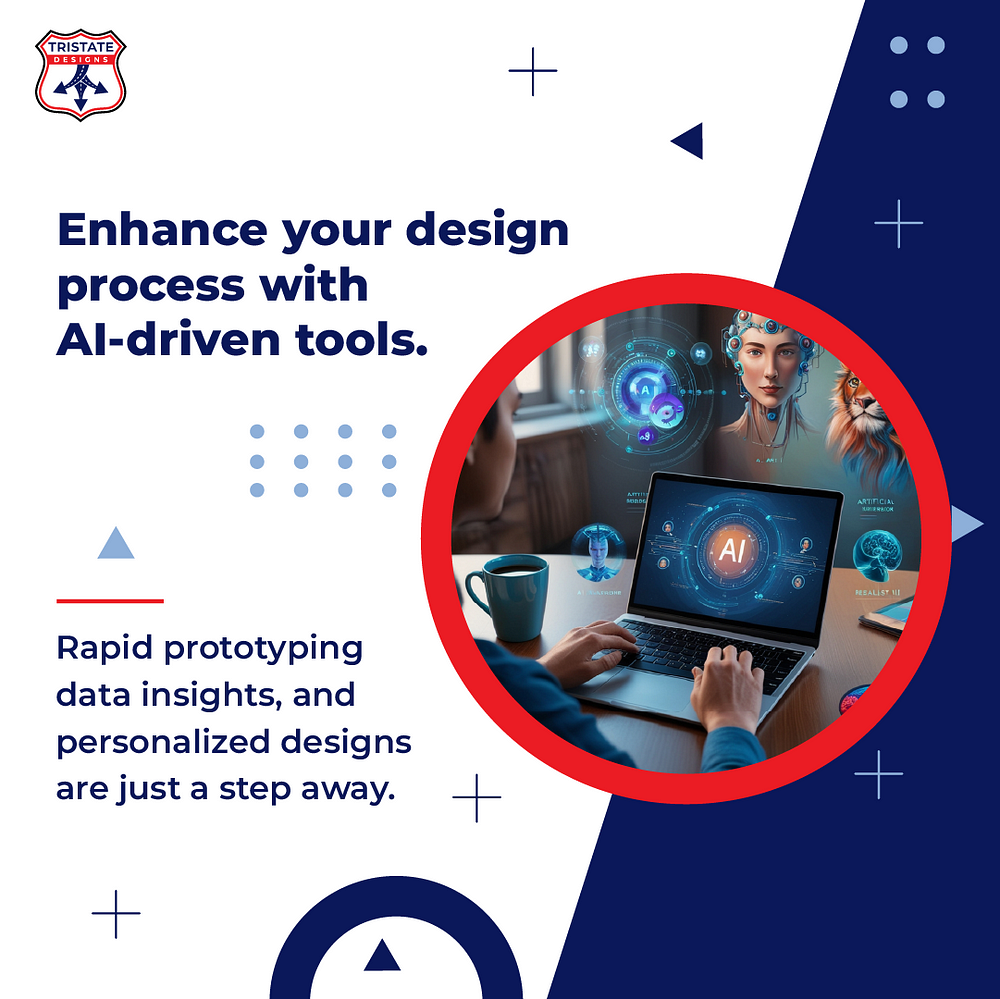In today’s digital age, design has evolved far beyond mere aesthetics. The future is driven by...
How AI is Revolutionizing Web Design in 2024
In today’s fast-evolving digital landscape, the integration of Artificial Intelligence (AI) has dramatically changed the way websites are designed and developed. From automated design tools to intelligent user experience (UX) solutions, AI is reshaping the web design industry in ways that were once unimaginable. As we step into 2024, the impact of AI on web design has reached new heights, driving efficiency, creativity, and personalized experiences. In this blog, we’ll explore how AI is revolutionizing web design in 2024 and how businesses can leverage these advancements to stay ahead of the curve.

1. AI-Powered Design Tools: A New Era of Automation
One of the most significant contributions of AI to web design is the rise of AI-powered design tools. These tools allow designers to create professional, high-quality websites with minimal manual intervention. AI can now analyze design elements, user preferences, and even trends to generate website layouts, color schemes, and typography that align with a brand’s identity. This level of automation accelerates the design process, reduces human error, and frees up time for designers to focus on more complex tasks.
2. Personalized User Experience (UX) with AI
Personalization is no longer just a buzzword; it’s an expectation. In 2024, AI has become integral to delivering highly personalized web experiences. With AI-driven algorithms, websites can now adapt in real-time to a user’s behavior, preferences, and needs. For instance, AI can track a visitor’s browsing habits and customize the website layout, content, or product recommendations accordingly. This results in a seamless and intuitive user experience, which ultimately leads to higher engagement and conversion rates.
Take eCommerce websites, for example. AI can dynamically adjust product recommendations based on previous searches or purchases, ensuring that users are presented with relevant content that keeps them engaged. AI-powered chatbots are another example, providing instant, human-like support that improves customer satisfaction and retention.
3. AI and Responsive Design: The Mobile-First Future
Responsive design has been a cornerstone of web development for years, but AI takes it to a new level. AI can now predict and optimize a website’s responsiveness for various devices and screen sizes without manual coding. By analyzing user data and device trends, AI ensures that the website adapts perfectly across all platforms, providing users with a consistent and fluid experience.
In 2024, AI also plays a key role in improving accessibility, ensuring that websites are designed to meet the needs of users with disabilities. From automated alt-text generation to voice-enabled interfaces, AI-driven solutions are making the web more inclusive.
4. Content Creation and Optimization with AI
Content is king, and in 2024, AI is enhancing the way content is created and optimized for websites. AI-powered tools are helping designers and content creators generate written content, graphics, and even videos based on user preferences and search engine optimization (SEO) trends. These tools can analyze keywords, suggest topics, and fine-tune the structure to ensure that the content ranks higher on search engines.
In addition to creating content, AI is also instrumental in optimizing it. For instance, AI can track user engagement with specific pages or elements of a website and recommend changes to improve performance. This helps businesses refine their content strategies and improve their SEO efforts over time.
5. AI for Visual and Voice Search Optimization
In 2024, search engine optimization (SEO) is no longer limited to traditional text-based searches. AI has made significant strides in optimizing websites for visual and voice search. With AI-driven algorithms, web designers can now optimize images, videos, and voice-enabled content to improve discoverability. For instance, Google’s visual search capabilities allow users to search by uploading an image, while AI algorithms interpret the visual content to return relevant results.
Voice search is also gaining popularity, with AI voice assistants like Siri, Alexa, and Google Assistant becoming a part of daily life. AI can analyze voice search data to ensure websites are optimized for conversational queries, providing users with faster and more accurate results.
6. The Future of Web Design: AI and Human Collaboration
While AI is revolutionizing web design, it’s important to note that it doesn’t replace human creativity. In fact, AI complements the work of designers, empowering them to be more efficient and imaginative. AI tools automate repetitive tasks, allowing designers to focus on innovation and storytelling. The collaboration between AI and human designers is what will shape the future of web design.
In 2024, the role of AI in web design will continue to expand. From predictive analytics that guide design choices to AI-driven A/B testing for optimal website performance, the future of web design will be a blend of machine intelligence and human expertise.
Conclusion
AI is no longer a futuristic concept but a reality that’s transforming web design in 2024. With AI-powered design tools, personalized UX, responsive designs, and advanced SEO techniques, businesses can create websites that are not only visually stunning but also highly functional and engaging. By embracing AI, web designers can stay ahead in the ever-evolving digital landscape, delivering websites that meet the needs of users and exceed their expectations.


